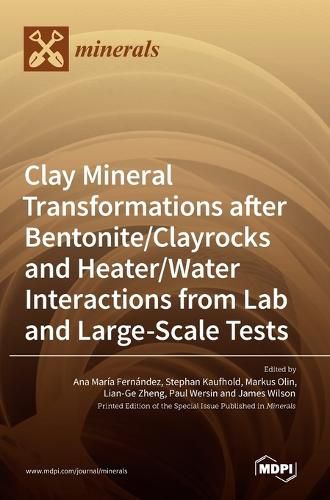Readings Newsletter
Become a Readings Member to make your shopping experience even easier.
Sign in or sign up for free!
You’re not far away from qualifying for FREE standard shipping within Australia
You’ve qualified for FREE standard shipping within Australia
The cart is loading…






This title is printed to order. This book may have been self-published. If so, we cannot guarantee the quality of the content. In the main most books will have gone through the editing process however some may not. We therefore suggest that you be aware of this before ordering this book. If in doubt check either the author or publisher’s details as we are unable to accept any returns unless they are faulty. Please contact us if you have any questions.
This book, Clay Mineral Transformations after Bentonite/Clayrocks and Heater/Water Interactions from Lab and Large-Scale Tests , covers a broad range of relevant and interesting topics related to deep geological disposal of nuclear fuels and radioactive waste.
Most countries that generate nuclear power have developed radioactive waste management programmes during the last 50 years to emplace long-lived and/or high-level radioactive wastes in a deep underground repository in a suitably chosen host rock formation. The aim is to remove these wastes from the human environment. If a site is properly chosen, a repository system comprising both natural and engineered barriers would provide a high level of protection from the toxic effects of the waste.
The 17 papers published in this Special Issue show that bentonites and clayrocks are an essential component of the multi-barrier system ensuring the long-term safety of the final disposal of nuclear waste. The efficiency of such engineered and natural clay barriers relies on their physical and chemical confinement properties, which should be preserved in the long-term.
$9.00 standard shipping within Australia
FREE standard shipping within Australia for orders over $100.00
Express & International shipping calculated at checkout
This title is printed to order. This book may have been self-published. If so, we cannot guarantee the quality of the content. In the main most books will have gone through the editing process however some may not. We therefore suggest that you be aware of this before ordering this book. If in doubt check either the author or publisher’s details as we are unable to accept any returns unless they are faulty. Please contact us if you have any questions.
This book, Clay Mineral Transformations after Bentonite/Clayrocks and Heater/Water Interactions from Lab and Large-Scale Tests , covers a broad range of relevant and interesting topics related to deep geological disposal of nuclear fuels and radioactive waste.
Most countries that generate nuclear power have developed radioactive waste management programmes during the last 50 years to emplace long-lived and/or high-level radioactive wastes in a deep underground repository in a suitably chosen host rock formation. The aim is to remove these wastes from the human environment. If a site is properly chosen, a repository system comprising both natural and engineered barriers would provide a high level of protection from the toxic effects of the waste.
The 17 papers published in this Special Issue show that bentonites and clayrocks are an essential component of the multi-barrier system ensuring the long-term safety of the final disposal of nuclear waste. The efficiency of such engineered and natural clay barriers relies on their physical and chemical confinement properties, which should be preserved in the long-term.